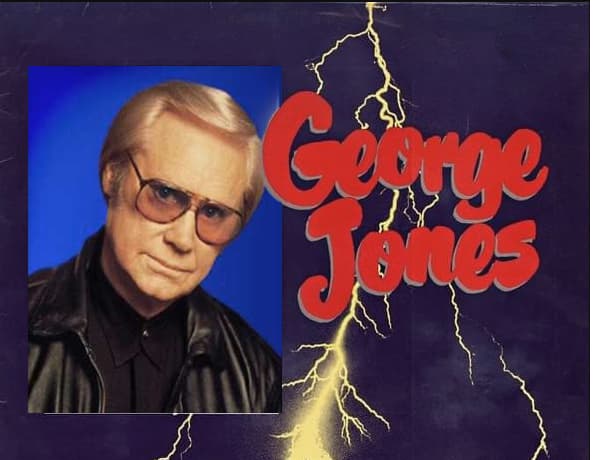
“White Lightning”: A Spirited Sip of Country’s Wild Heart
Ah, the late 1950s. A time when the world was shaking off the dust of war, and a new sound was electrifying the airwaves – rock and roll was certainly making its mark, but deep in the soul of America, another rhythm, equally potent and undeniably authentic, was still beating strong: country music. And from the heart of that tradition emerged a voice, singular and unmistakable, belonging to none other than George Jones. When we talk about the titans of country, the Possum, as he was affectionately known, stands tall, a man whose life and music were inextricably linked, often in ways that mirrored the very tales he sang. And among his early triumphs, a song truly struck a chord, a raucous, rollicking tune that would forever be etched into the annals of country music history: “White Lightning.”
It wasn’t just another song; it was a phenomenon. Released in 1959, “White Lightning” wasn’t merely a hit; it was George Jones’s very first number-one single on the Billboard country charts. Imagine the airwaves then, filled with this energetic ode to illicit spirits, a sonic jolt that perfectly captured a certain rebellious spirit bubbling beneath the surface of seemingly placid times. For those of us who lived through it, or whose parents and grandparents hummed along, it evokes a vivid picture: dusty backroads, whispered secrets, and the potent allure of something forbidden.
The story behind “White Lightning” is as colorful as the song itself. Penned by the legendary J.P. Richardson, better known as The Big Bopper (yes, the very same rock and roll pioneer who tragically died in the plane crash with Buddy Holly and Ritchie Valens just months before this song hit big), it’s a testament to the raw, untamed spirit of the era. Richardson, with his knack for vivid storytelling, painted a picture of moonshine production with an almost cinematic flair. The lyrics, delivered with Jones’s inimitable blend of playfulness and grit, describe the process of distilling the potent, clear liquor, from the “cawn liquor” and “sugar” to the “pure grain alcohol.” It’s a narrative that, while perhaps romanticizing a dangerous practice, nonetheless taps into a deeply rooted American archetype: the resourceful, independent individual living by their own rules, even if those rules bend the law.
But beyond the literal recipe for moonshine, the meaning of “White Lightning” resonates on a deeper level. It’s a celebration of a particular kind of rural defiance, a nod to the spirit of those who carved out their own existence away from the prying eyes of authority. It speaks to a certain wildness, a yearning for freedom that often found expression in the clandestine world of moonshine. For many, it wasn’t just about the drink; it was about the independence, the thrill of the forbidden, and the communal bond formed around shared secrets and illicit pleasures. Jones’s vocal performance perfectly embodies this spirit – it’s full of life, a little mischievous, and utterly captivating. You can almost taste the kick of that “white lightning” just by listening to his delivery.
Thinking back, “White Lightning” arrived at a pivotal moment for George Jones. He had been honing his craft for years, releasing singles that showcased his incredible vocal range and emotional depth. But it was “White Lightning” that truly broke him into the mainstream, solidifying his place as a force to be reckoned with in country music. It paved the way for a string of hits that would define his career and influence countless artists who followed. It’s a testament to the power of a great song, coupled with an iconic voice, to transcend its immediate context and become a timeless classic. For those of us who recall those simpler, yet in many ways more complex, times, “White Lightning” isn’t just a song; it’s a potent shot of nostalgia, a reminder of where we’ve been and the enduring power of American roots music. It’s a song that, much like the spirit it describes, still has the power to electrify and leave a lasting impression.